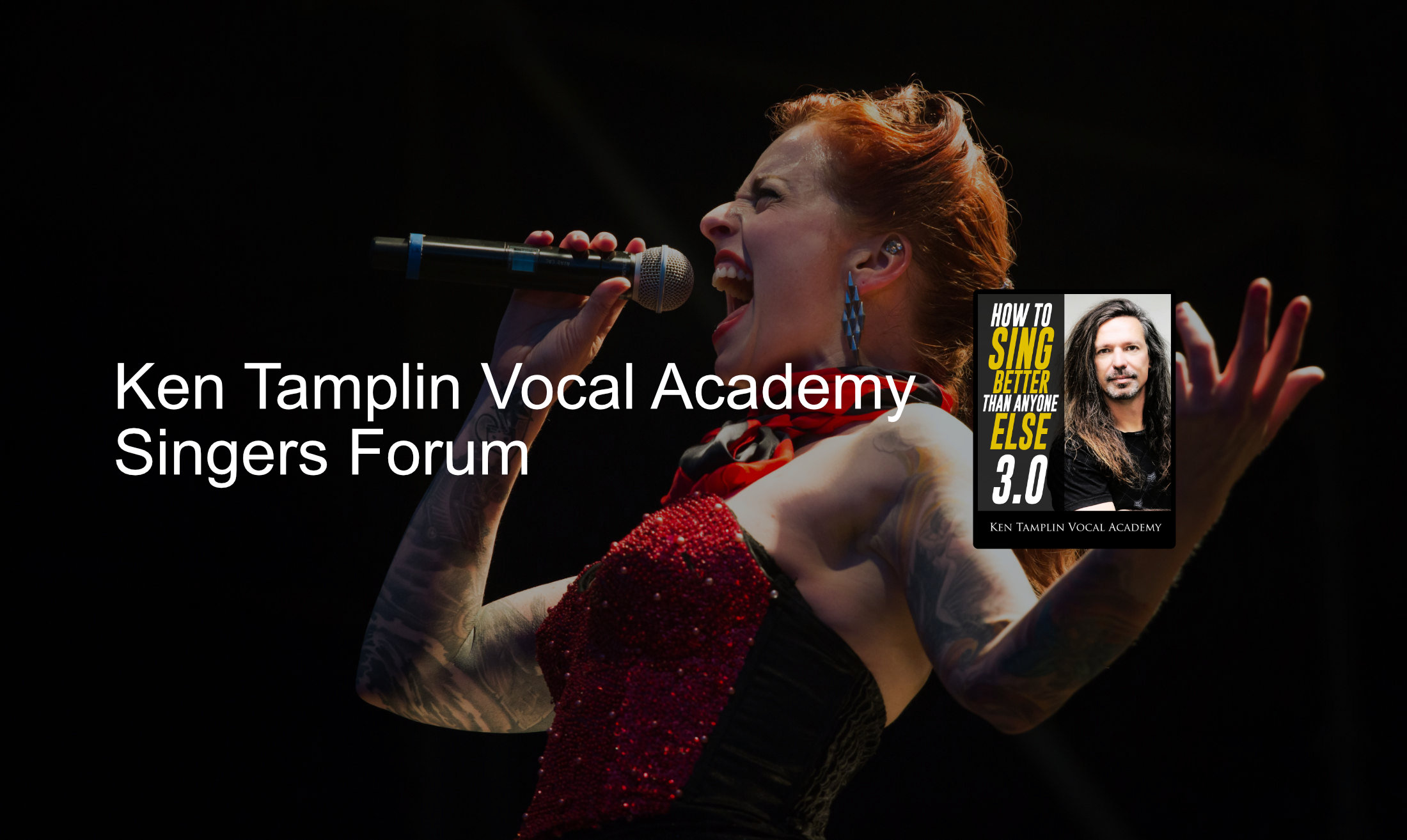How to transition from scales to songs.
 realityfusion
Enrolled Posts: 3
realityfusion
Enrolled Posts: 3
So I have been gigging for over a year we generally play 2 shows a week on average. I started this course because I was blowing out my voice every night and I knew I was singing incorrectly which is why I dropped the dime and enrolled. My question is this, in practicing my throat is opening up becoming wide and transitions are happening smoothly, but when I start singing songs my throat and voice goes back to the same old business as usual. I have been making a conscious effort to maintain good posture, breathe correctly and relax but my voice doesn't seem to want to operate the same when singing songs as when doing scales.
Any suggestions?
Any suggestions?


Comments
Cinema,
The Webinars have been recorded and are available for download here on the KTVA Forums under the "WEBINARS" category. If you get on the main Forum page, it's near the bottom of the forums.
There you will find several posts. Some discuss the Webinars, and Two posts in particular have LINKS to all the previous webinars. When you click on those links you will have the option to download the webinars to your computer, or to try to stream them. I recommend you download, for a better viewing experience. Then you can watch them again later, as many times as you want.
The recordings are only available to Enrolled students. Anyone can currently attend a Live KTVA webinar. There will be one this Saturday, 12/01/12 at 10:00 AM Pacific Time on the topic of Pacing Your Live Performance. (Here is the link to the upcoming Webinar: https://www.fuzemeeting.com/fuze/60f55bc4/17874635
The Webinars have been getting progressively better and better. I encourage all vocalists to participate in these sessions. You may even have the opportunity to directly ask Ken a question and get your answer right there on the spot!
The two threads in the Webinars Section you need to access are "Download Previous Webinars Part One" and "Download Webinars Part Two". There is an incredible amount of detailed information available to you there that goes into further depth on top of what is covered in the KTVA Stages One, Two, and Three. This is a dynamic, growing part of KTVA, that is fueled in part by many of the questions that come up here on the KTVA Forums.
KTVA, unlike some other vocal methods, is not bound by the confines of re-writing a cumbersome, volumninous book every several years. Video content is constantly being updated via YouTube "How to Sing Like" additions, vocal lesson demos, a new Building Head Voice video, and Topical Webinars. Subject-matter Texts are being written, such as KTVA Guide to Belting, and Vibrato: What it IS and How to Develop it.
This is a GREAT time to be enrolled in KTVA! Fasten your Seat Belt, because this ROCK-IT is ready to ROLL!!!
If you're still having trouble locating the Webinar Videos, let us know, and we'll get you pointed in the right direction!
Bob
Ken told me to focus on singing the songs with only the vowel sounds and to use the vowel mods (figure out for each song the vocal mods required for each note, if any). Make a mental note to focus on hitting the correct mods on stage (as much as is feasible). I relearned songs and started putting in touches of the consonants. You sort of become a ventriloquist in that you're no longer really singing all the words per se, but it sounds like you are. Listen to Steve Perry as a singer that really glosses over a lot of consonants.
The more/longer you do the exercises the less you will have to think about the mods. At some point the mods will start to become a natural part of your singing and you will seldom have to think about them again as the mods gets transformed into the muscle memory and thus turns into vocal sensations that become familiar. I'm certain that Ken will get you going down the best path needed for you, I hope this helps some also.
I really like the way voodoo explained what needs to happen in the post above. What we all need to be morphing more towards is singing more continuous vowels with less confounding, contiguous consonants. Imagine the lyrics of the songs to be long molds into which we are pouring this almost liquified air. The consonants are boards that are placed into the molds between all the syllables. When the separating boards are in place, the continuity of the vowels is broken into disconnected fragments.
Our goal is to turn this broken-up series of chunks and bumps into a smooth and appealing continuous sound that our ears and our minds can latch onto and take a relaxing ride of imagery and emotion, not to be battered and buffeted by stop and go traffic.
In order to get the most satisfying ride, we need to sculpt our vowels (which make up 99% of the song) into a beautiful shape and we also need to sand and smooth down almost every blockage from the separating consonant compartments, so that our song can become, to the greatest extent possible, one long, contiguous, consonant-free, smooth highway of sound. No bumps or potholes, with only minimized consonants that give just a hint of what the word would be if we were speaking instead of singing. A free-flowing fountain, a fire-extinguisher pouring out a solid stream of sound with only hints, cues, and clues to convey the linguistic content of the song.
This smooth and solid runway lets our musical notes take off and soar without engine trouble or stalls in flight. A turbulence-free flight opens up the skies for our vowel modifications to take wing, and we only need learn to transition from vowel to vowel before descending to the consonant crush.
I slip the surly bonds of earth and...